#Camera Lucida: Reflections on Photography
Quote
It is said that mourning, by its gradual labour, slowly erases pain; I could not, I cannot believe this; because for me, Time eliminates the emotion of loss (I do not weep), that is all. For the rest, everything has remained motionless. For what I have lost is not a Figure (the Mother), but a being; and not a being, but a quality (a soul): not the indispensable, but the irreplaceable.
Roland Barthes, Camera Lucida: Reflections on Photography
#mourning#grief#pain#feelings#emotions#time#humanity#quotes#Barthes#Roland Barthes#Camera Lucida: Reflections on Photography
141 notes
·
View notes
Text
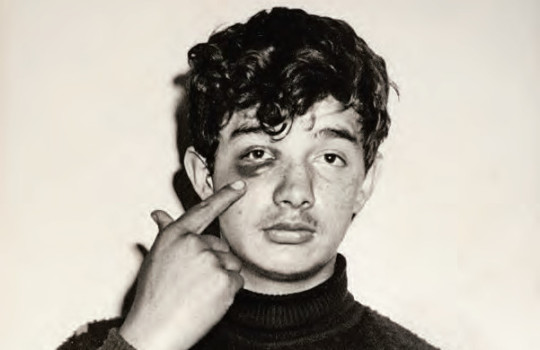
ÇA-A-ETÉ? AGAINST BARTHES
Joan Fontcuberta
Walter Benjamin aside, the most cited essay on photography in history is without a doubt Camera Lucida. It is Roland Barthes’ final book, and was published shortly before his death. With his poetic gaze and theoretical reflections, Barthes develops key concepts in the book, such as punctum and studium, which have since been incorporated into the heritage of photographic criticism. In one of the most significant passages, we find another central idea: “In Photography I can never deny that the thing has been there. There is a superimposition here: of reality, and of the past. And since this constraint exists only for Photography, we must consider it, by reduction, as the very essence, the noeme of Photography. What I intentionalize in a photograph is neither Art nor Communication, it is Reference, which is the founding order of Photography. Photography's noeme will therefore be: ‘That-has-been’” [Ça-a-été].
This ça-a-été constitutes the ontological bulwark of photography’s documentary value: without the certainty of “that-has-been”, all visual testimony ends up delegitimated. This is why it could be beneficial to analyse photo-journalistic snapshots in light of this criteria. For example, as a case study, we could take the photographic archive of the now-closed Mexican journal Alerta, a tabloid dedicated to blood and guts news stories, which in Latin America is referred to as “nota roja” [red note]. If we do an analysis, we are surprised to see how frequently the iconological pattern of the gesture of pointing appears: a figure in the image (a victim, a witness, an “expert”, whoever) points with a finger at someone or something in the composition to draw attention to it. These are theatrical, artificial situations where it is clear that the model is following the reporter’s instructions, while nevertheless making doubly clear the pretension of applying he principle of ça-a-été, in a way that is as naïve as it is rudimentary. We are witness to an effect of superimposed indexicalities: one passed down through photography and the other of the finger (the index) pointing. Both the camera lens and the finger focalise our perception towards something that has gone by. Yet the staging is so naïve, rudimentary and artificial that instead of emphasising, what it does is problematise the validating value of the camera, especially in genres like forensic and news photography, which should be characterised precisely by an aseptic, derhetorized treatment of information.
Barthes, perhaps, fascinated by the theatricality he had also dedicated enthusiastic studies to, sought to pass over this drift: “What is theatricality?”, he asked in 1971. “It is not decorating representation, it is unlimiting language.” Very well, then, but if so, ça-a-été is no longer a guarantee of objectivity, inasmuch as it explores staging. A triple staging, in fact, as all photography implies the staging of the object, the gaze and of the photographic device itself. It is from the conciliation of these stagings that language emerges. We can decide to not limit it, we can grant it all freedom available to it, but at the cost of breaking the contract of verisimilitude.
Unmasked by the overplayed gesticulation of accusing or pointing fingers, we discover that the noeme heralded by Barthes is more a theatrical operation than one of reference. “That has been”, indeed, but what, in fact, has really been? It is imperative to ask this when there is no spontaneity, but rather construction. Yet worst of all is that photography, in and of itself, tells us very little about “that”. Very little beyond scenery and costumes.
Joan Fontcuberta
12 notes
·
View notes
Text
As a child, artist Hank Willis Thomas was told he stared too much and asked too many questions. Today, these very attributes shape his artistic practice, which pivots on the theme of perspective. “All of my work is about framing and contexts,” says the artist. “Depending on where you’re standing, it really shapes your perspective of the truth, of reality, and of what’s important.” Reading Roland Barthes’ Camera Lucida, Thomas was struck by the idea of the punctum, the part of an image that impacts and stays with the viewer. Drawing from his background in photography to augment his work with other media, the artist’s sculptural works like Liberty (2015) isolate this punctum and translate it into three-dimensional space.
In his research, Thomas encountered the 1967 photobook by Ernest Cole documenting South African Apartheid. In particular, the artist was struck by an image of 13 coal miners being stripped nude for a medical examination. Rather than reproduce their exploitation and objectification, Thomas denies the viewer their naked bodies in his sculpture Raise Up (2014), instead isolating the miners’ heads and raised arms, confronting viewers with their gaze. Shortly after Thomas created Raise Up, the phrase “Hands up, Don’t shoot” became a popular protest chant in the wake of the police murder of Michael Brown in Ferguson, MI. As he mines history through photography, Thomas draws connections between past and present to illustrate the continuing logics of oppression that shape Black life.
At Walla Walla Foundry in Washington, molten bronze is poured into specially designed casts to create the 609 individual pieces that will be welded together to form The Embrace (2023), a public memorial to Rev. Dr. Martin Luther King Jr. and Coretta Scott King to be installed in the Boston Common. The sculpture depicts two sets of arms intertwined in a loving embrace, referencing a photograph of the Kings embracing after Martin won the Nobel Prize in 1964. Envisioning his work as being as much about each of us as it is about the Kings, Thomas creates space for the public to engage with the sculpture physically and ensures it is accessible to as many people as possible. “I’d like to believe this is just the beginning of a new way of thinking about how public space can be viewed, and how we reflect on the past with care and concern for the future,” says Thomas.
#video#art 21#art history#artists#black art history#black artists#art#martin luther king jr#MLK#sculpture#pbs#art in the 21st century
8 notes
·
View notes
Text
Before the Glitch: “Stylized Repetition” and Gender Performance in the Online Mainstream
By: Andromeda 🌊🪨
In the introduction to her book Glitch Feminism: A Manifesto, Legacy Russell writes, “Online, I sought to become a fugitive from the mainstream, unwilling to accept its limited definition of bodies like my own.” The “real world,” or the world “AFK” (Away From Keyboard) involves an immediate and fixed form of visibility, and thus pressure to conformity that the digital one doesn’t necessarily demand. However, as Russell writes, the “artifice of a simple digital Shangri-La” has been “punctured”– escaping the mainstream isn’t as simple as logging on. As all worlds do, the digital world is dominated by a “mainstream”, one rife with the “incessant white heteronormative observation” that Russell describes in her “AFK” to be fraught with. So what exactly does this digital mainstream look like? How do we “construct and perform” our “gendered self,” as Russell puts it, in the language of social media?
As a university student, meeting people typically demands 3 obligatory pieces of information: name (to be immediately forgotten), major (to be vaguely commented on), and Instagram account (to follow, and thus cement your new acquaintanceship. Also, to remind you of the name you just forgot). Despite what self-proclaimed “free spirits” and “casual-Instagrammers” will tell you, your Instagram is not just a photo-album for you to look back on, or a journal in which to document the events of your life. That’s what photo-albums and journals are for, people! It’s an image of yourself designed for presentation, the digital face you present to old friends and new acquaintances alike: it’s your own curation of exactly how you want to be perceived, neatly packaged in rows of three. On Instagram, “performing [one’s] gendered self” under “incessant white heteronormative observation” is the name of the game. Personally, I would even venture to say that any online presence is an inherently exhibitionistic one. If you disagree with me on that one, fine. Go write about it on your tumblr.
What you can’t argue is that using Instagram, arguably the most popular social media platform today, is an exercise that begs for observation, for engagement, for the imposition of opinions and identifiers. In Camera Lucida: Reflections on Photography, Roland Barthes (one of the only tolerable men that France has ever produced) writes, “every photograph is a certificate of presence.” Let’s for the moment table (read: ignore) the complications of technological tampering on the semiotic-ontological-whatever relationships between photo and subject raised by the likes of Stephen Prince and Lev Manovich (as neither of us have the time for that), and take what Barthes says at face value.
If a photo is a certificate of presence, we can consider Instagram to be a glass case of certificates of your choosing still and pristine as they tell the story of digital you, spectated you, ossified you. And here’s the kicker: you’re not only on display in the case, but you’re on display as the person who curated it. If you’re a pretentious asshole like myself, you can think of these curatorial choices as the metalanguage of your Instagram (I warned you!). What, with whom, and how often you post all exist in the context of your choice to post at all, and the fact that every post has an agenda (regardless of what that agenda might be). Each post is a stylistic choice, a piece added to the puzzle of one’s digital identity.
In Performative Acts and Gender Constitution, Judith Butler (who happens to be the celebrity hall-pass of a friend of mine) describes gender identity as, "an identity instituted through a stylized repetition of acts. Further, gender is instituted through the stylization of the body and, hence, must be understood as the mundane way in which bodily gestures, movements, and enactments of various kinds constitute the illusion of an abiding gendered self."

I feel that this passage (along with facilitating my understanding of the hall-pass thing–I can think of bodily movements of various kinds that I’d like to repeat in a stylized manner with Judith) is easily translated to the idea of gender performance online. What are posts, if not stylized acts? Lighting, pose, caption–every element is designed to, quite literally, cultivate an image. The sharing of posts, how they accumulate and interact, are acts of stylized repetition that, whether we know it or not, construct our digital identities.
As an example, take a look at this TikTok, which outlines a “recipe for a perfect photo dump.” A photo dump is a group of photos collected in one carousel Instagram post, typically designed to look effortless. But the detailed instructions in this post (including one “effortless photo”, an “outfit pic”, and a “personality pic” amongst others) exemplify a guideline for the exact kind of “stylization of the body” (albeit a digital one) that Butler describes, meticulously designed to communicate an identity. Even the arrangement of our Barthesian certificates of presence (the TikToker has graciously numbered each picture, so they may be ordered “perfectly”), is paramount in constructing our digital selves.
“The glitch,” Russell writes, “acknowledges that gendered bodies are far from absolute but rather an imaginary, manufactured, and commodified for capital.” What an unbearably fierce and pithy way to phrase how the body exists in the digital mainstream! From clean-girl to rat girl to coquette girl to messy girl (this one strikes me as particularly ironic–who knew there were so many rules to being messy?), it never fucking stops! These inflexible hole-in-the-wall shapes that we contort ourselves into through our online behaviour generate the same kind of frustration in me that led me to memorize the cool girl monologue in high-school. These trends and their proponents demand of us, as Russell writes, “a gender performance that fits within a binary in order to comply with the prescriptions of the everyday.” Unspoken rules and categories like these are just as, if not more, stifling than those in the mainstream that exists AFK.
Russell’s manifesto calls to mind one of my favourite winners of RuPaul’s Drag Race, Sasha Velour, and her verse in ‘Category Is…’, the song performed by the season’s final four competitors. There are a few lines in there that I think Russell might enjoy:
Wear a crown
Fuck with gender
Bend the rules
Don’t surrender

Sounds about right to me! The next time you see a clean-girl TikToker’s hair tutorial or diet plan or morning routine, just take three deep breaths, and think of Sasha. And you think hard enough, who knows? Maybe the force of your psychic energy will crack her forty-dollar gua sha.
2 notes
·
View notes
Text
“Life is thus made up of little solitudes.”
~ Roland Barthes,
from “Camera Lucida: Reflections on Photography”
40 notes
·
View notes
Photo

August 17, 2022
Each photograph is read as the private appearance of its referent: the age of Photography corresponds precisely to the explosion of the private into the public, or rather into the creation of a new social value, which is the publicity of the private: the private is consumed as such, publicly.
-- Roland Barthes, Camera Lucida: Reflections on Photography
31 notes
·
View notes
Text

Camera Lucida: Reflections on Photography, Roland Barthes
3 notes
·
View notes
Text
Before the Glitch: “Stylized Repetition” and Gender Performance in the Online Mainstream
By: Andromeda 🌊🪨
In the introduction to her book Glitch Feminism: A Manifesto, Legacy Russell writes, “Online, I sought to become a fugitive from the mainstream, unwilling to accept its limited definition of bodies like my own.” The “real world,” or the world “AFK” (Away From Keyboard) involves an immediate and fixed form of visibility, and thus pressure to conformity that the digital one doesn’t necessarily demand. However, as Russell writes, the “artifice of a simple digital Shangri-La” has been “punctured”– escaping the mainstream isn’t as simple as logging on. As all worlds do, the digital world is dominated by a “mainstream”, one rife with the “incessant white heteronormative observation” that Russell describes in her “AFK” to be fraught with. So what exactly does this digital mainstream look like? How do we “construct and perform” our “gendered self,” as Russell puts it, in the language of social media?
As a university student, meeting people typically demands 3 obligatory pieces of information: name (to be immediately forgotten), major (to be vaguely commented on), and Instagram account (to follow, and thus cement your new acquaintanceship. Also, to remind you of the name you just forgot). Despite what self-proclaimed “free spirits” and “casual-Instagrammers” will tell you, your Instagram is notjust a photo-album for you to look back on, or a journal in which to document the events of your life. That’s what photo-albums and journals are for, people! It’s an image of yourself designed for presentation, the digital face you present to old friends and new acquaintances alike: it’s your own curation of exactly how you want to be perceived, neatly packaged in rows of three. On Instagram, “performing [one’s] gendered self” under “incessant white heteronormative observation” is the name of the game. Personally, I would even venture to say that any online presence is an inherently exhibitionistic one. If you disagree with me on that one, fine. Go write about it on your tumblr.
What you can’t argue is that using Instagram, arguably the most popular social media platform today, is an exercise that begs for observation, for engagement, for the imposition of opinions and identifiers. In Camera Lucida: Reflections on Photography, Roland Barthes (one of the only tolerable men that France has ever produced) writes, “every photograph is a certificate of presence.” Let’s for the moment table (read: ignore) the complications of technological tampering on the semiotic-ontological-whatever relationships between photo and subject raised by the likes of Stephen Prince and Lev Manovich (as neither of us have the time for that), and take what Barthes says at face value.
If a photo is a certificate of presence, we can consider Instagram to be a glass case of certificates of your choosing still and pristine as they tell the story of digital you, spectated you, ossified you. And here’s the kicker: you’re not only on display inthe case, but you’re on display as the person who curated it. If you’re a pretentious asshole like myself, you can think of these curatorial choices as the metalanguageof your Instagram (I warned you!). What, with whom, and how often you post all exist in the context of your choice to post at all, and the fact that every post has an agenda (regardless of what that agenda might be). Each post is a stylistic choice, a piece added to the puzzle of one’s digital identity.
In Performative Acts and Gender Constitution, Judith Butler (who happens to be the celebrity hall-pass of a friend of mine) describes gender identity as, “an identity instituted through a stylized repetition of acts. Further, gender is instituted through the stylization of the body and, hence, must be understood as the mundane way in which bodily gestures, movements, and enactments of various kinds constitute the illusion of an abiding gendered self.”
I feel that this passage (along with facilitating my understanding of the hall-pass thing–I can think of bodily movements of various kinds that I’d like to repeat in a stylized manner with Judith) is easily translated to the idea of gender performance online. What are posts, if not stylized acts? Lighting, pose, caption–every element is designed to, quite literally, cultivate an image. The sharing of posts, how they accumulate and interact, are acts of stylized repetition that, whether we know it or not, construct our digital identities.
As an example, take a look at this TikTok, which outlines a “recipe for a perfect photo dump.” A photo dump is a group of photos collected in one carousel Instagram post, typically designed to look effortless. But the detailed instructions in this post (including one “effortless photo”, an “outfit pic”, and a “personality pic” amongst others) exemplify a guideline for the exact kind of “stylization of the body” (albeit a digital one) that Butler describes, meticulously designed to communicate an identity. Even the arrangement of our Barthesian certificates of presence (the TikToker has graciously numbered each picture, so they may be ordered “perfectly”), is paramount in constructing our digital selves.
“The glitch,” Russell writes, “acknowledges that gendered bodies are far from absolute but rather an imaginary, manufactured, and commodified for capital.” What an unbearably fierce and pithy way to phrase how the body exists in the digital mainstream! From clean-girl to rat girl to coquette girl to messy girl (this one strikes me as particularly ironic–who knew there were so many rules to being messy?), it never fucking stops! These inflexible hole-in-the-wall shapes that we contort ourselves into through our online behaviour generate the same kind of frustration in me that led me to memorize the cool girl monologue in high-school. These trends and their proponents demand of us, as Russell writes, “a gender performance that fits within a binary in order to comply with the prescriptions of the everyday.” Unspoken rules and categories like these are just as, if not more, stifling than those in the mainstream that exists AFK.
Russell’s manifesto calls to mind one of my favourite winners of RuPaul’s Drag Race, Sasha Velour, and her verse in ‘Category Is…’, the song performed by the season’s final four competitors. There are a few lines in there that I think Russell might enjoy:
Wear a crown
Fuck with gender
Bend the rules
Don’t surrender
Originally posted by ivanv
Sounds about right to me! The next time you see a clean-girl TikToker’s hair tutorial or diet plan or morning routine, just take three deep breaths, and think of Sasha. And you think hard enough, who knows? Maybe the force of your psychic energy will crack her forty-dollar gua sha.
0 notes
Photo
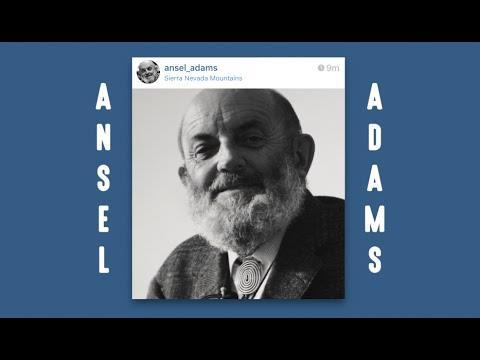
Ansel Adams: Photography With Intention HELP ME MAKE MORE VIDEOS: http://www.patreon.com/nerdwriter ASK ME QUESTIONS HERE: http://thenerdwriter.tumblr.com TWITTER: https://twitter.com/TheeNerdwriter Email me here: [email protected] SOURCES & FURTHER READING: Ansel Adams - Master Photographers (BBC) Part 1: https://www.youtube.com/watch?v=CSzYdRUGzTE Part 2: https://www.youtube.com/watch?v=lgK7rg04KCQ Part 3: https://www.youtube.com/watch?v=gjXeZUbjjfI Photography Visualization: Advice by Ansel Adams https://www.youtube.com/watch?v=gT-G42cskH4 1958 Documentary on Ansel Adams https://www.youtube.com/watch?v=C1sNvguh3Y8 Ansel Adams: A Documentary Film (PBS) 2002 https://www.youtube.com/watch?v=jvt1ImIKi0U Diana Eftaiha, “Understanding & Using Ansel Adam's Zone System” (via envatotuts+) 2013 http://photography.tutsplus.com/tutorials/understanding-using-ansel-adams-zone-system--photo-5607 How Big is Snapchat (via Photoworld) https://cewe-photoworld.com/how-big-is-snapchat/ Roland Barthes, “Camera Lucida: Reflections on Photography” http://monoskop.org/images/c/c5/Barthes_Roland_Camera_Lucida_Reflections_on_Photography.pdf Sarah Boxer, “Critic's Notebook; Memories Live In Ansel Adams's Dreamscapes” (via New York Times) 2001 http://www.nytimes.com/2001/09/01/arts/critic-s-notebook-memories-live-in-ansel-adams-s-dreamscapes.html Sarah Hill, “"Landscape,Writing, and Photography" (via University of Auckland Italian and Art History) 1996 http://www.otago.ac.nz/deepsouth/vol2no1/sally.html David P. Peeler, “The Romance of Platonic Forms: Edward Weston and Ansel Adams” Colby, Volume 25, Issue 2 1989 http://digitalcommons.colby.edu/cgi/viewcontent.cgi?article=2745&context=cq
0 notes
Text
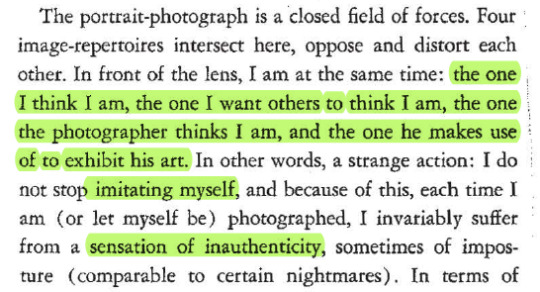


Barthes, Roland. Camera Lucida : Reflections on Photography. New York: Hill and Wang, 1981.
#OR#haters of being photographed assemble!!!#readings that speak nothing but my heart's most resentful mutterings (lovingly)
0 notes
Quote
Ultimately — or at the limit — in order to see a photograph well, it is best to look away or close your eyes. “The necessary condition for an image is sight,” Janouch told Kafka; and Kafka smiled and replied: “We photograph things in order to drive them out of our minds. My stories are a way of shutting my eyes.”
Roland Barthes, Camera Lucida: Reflections on Photography
#photography#images#perception#vision#imagination#memory#quotes#Barthes#Roland Barthes#Camera Lucida: Reflections on Photography
130 notes
·
View notes
Quote
Clocks for Seeing includes works ranging from the historical to the contemporary, and from science to art. Its title comes from a lyrical passage in Roland Barthes’ Camera Lucida: Reflections on Photography, in which he relates the sound of cameras (particularly old wooden ones) to the sounds of time (bells, clocks, watches), and describes cameras as clocks for seeing.
Unwinding Time: Clocks for Seeing at the Art Gallery of Alberta | National Gallery of Canada
0 notes
Text

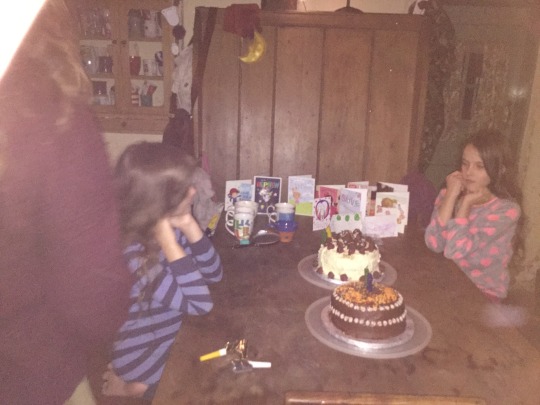
"The Photograph does not necessarily say what is no longer, but only and for certain what has been." (Barthes, 1996)
The idea and concept I would like to bring forward in my photo essay, is, alike to my last piece, based around nostalgia and my family. I only have two photos at the moment, but I'm going to go home to get some more (both older pictures and to get a recent picture), my photos are of my kitchen, and I want to explore the nostalgia and sentimentality of photography and the passage of time through photography.
"I was like that friend who had turned to Photography only because it allowed him to photograph his son. As Spectator I was interested in Photography only for "sentimental" reasons; I wanted to explore it not as a question (a theme) but as a wound: I see, I feel, hence I notice, I observe, and I think." (Barthes, 1996)
Nostalgia and sentimentality is something I don't seem to have ever been without, and that's what photography has always been for me; something to reflect on and to mourn. I don't look back on family photos or photos I've taken often because I get such intense feelings of loss; that I can never be back in that moment again, that the moment captured is completely lost. Photography seems to skew my perspective on things, and I want to reflect on that through using photos of my kitchen from different years and how the passage of time changes how I feel about the photos.
I've been reading Roland Barthes Camera Lucida: Reflections on Photography, and I'm really interested in his quite personal take on photography.
0 notes
Text
All I look like is other photographs of myself, and this to infinity: no one is ever anything but the copy of a copy, real or mental . . . Ultimately a photograph looks like anyone except the person it represents. For resemblance refers to the subject’s identity, an absurd, purely legal, even penal affair; likeness gives out identity “as itself”, whereas I want a subject—in Mallarmé’s terms—“as into itself eternity transforms it.”
from Camera Lucida: Reflections on Photography by Roland Barthes
#quotes#roland barthes#this sounds possibly blasé as a quote but it struck a chord with me and not only because of the tantalisingly Baudrillardian notes
0 notes
Text
The Camera Obscura and Painting

Unit 9
Research
Since the advent of photography, there has been a somewhat uneasy relationship between photography and painting. Even though the word, "photography" means "drawing with light" when translated from its Greek roots, many painters are reluctant to admit that they work from photographs. But many painters now use them as references, and some even work from them directly, by enlarging and tracing them.
Some, like well-known British artist David Hockney, believe that Old Master painters including Johannes Vermeer, Caravaggio, da Vinci, Ingres, and others used optical devices such as the camera obscura to help them achieve accurate perspective in their compositions. Hockney's theory, officially called the Hockney-Falco thesis (includes Hockney's partner, physicist Charles M. Falco), postulates that advancements in realism in Western art since the Renaissance were aided by mechanical optics rather than merely being the result of improved skills and abilities of the artists.
The Camera Obscura
The camera obscura (literally "dark chamber"), also called a pinhole camera, was the forerunner of the modern camera. It was originally a darkened room or box with a small hole in one side through which rays of light could pass. It is based on the law of optics that states that light travels in a straight line. Therefore, when traveling through a pinhole into a dark room or box, it crosses itself and projects an image upside down on the opposite wall or surface. When a mirror is used, the image can be reflected on a piece of paper or canvas and traced.
It is thought that some Western painters since the Renaissance, including Johannes Vermeer and other Master painters of the Dutch Golden Age that spanned the 17th century, were able to create very realistic highly detailed paintings by using this device and other optical techniques.
Documentary Film, Tim's Vermeer
The documentary, Tim's Vermeer, released in 2013, explores the concept of Vermeer's use of a camera obscura. Tim Jenison is an inventor from Texas who marveled at the exquisitely detailed paintings of the Dutch painter Johannes Vermeer (1632-1675). Jenison theorized that Vermeer used optical devices such as a camera obscura to help him paint such photorealistic paintings and set out to prove that by using a camera obscura, Jenison, himself, could paint an exact replica of a Vermeer painting, even though he was not a painter and had never attempted painting.
Jenison meticulously recreated the room and furnishings portrayed in the Vermeer painting, The Music Lesson, even including human models accurately dressed as the figures in the painting. Then, using a room-sized camera obscura and mirror, he carefully and painstakingly proceeded to recreate the Vermeer painting. The whole process took over a decade and the result is truly amazing as seen in the trailer of the documentary Tim's Vermeer, a Penn & Teller Film.
David Hockney's Book, Secret Knowledge
During the course of the filming of the documentary, Jenison called upon several professional artists to assess his technique and results, one of whom was David Hockney, the well known English painter, printmaker, set designer and photographer, and master of many artistic techniques. Hockney has written a book in which he also theorized that Rembrandt and other great masters of the Renaissance, and after, used optical aids such as the camera obscura, camera lucida, and mirrors, to achieve photorealism in their paintings. His theory and book created much controversy within the art establishment, but he published a new and expanded version in 2006, Secret Knowledge: Rediscovering the Lost Techniques of the Old Masters, and his theory and Jenison's are finding more and more believers as their work becomes known and as more examples are analyzed.
Does It Matter?
What do you think? Does it matter to you that some of the Old Masters and great painters of the past used a photographic technique? Does it diminish the quality of the work in your eyes? Where do you stand on the great debate over using photographs and photographic techniques in painting?
https://www.liveabout.com/camera-obscura-and-painting-2578256
0 notes
Photo
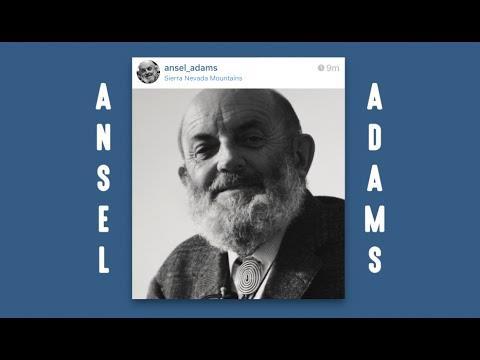
Ansel Adams: Photography With Intention HELP ME MAKE MORE VIDEOS: http://www.patreon.com/nerdwriter ASK ME QUESTIONS HERE: http://thenerdwriter.tumblr.com TWITTER: https://twitter.com/TheeNerdwriter Email me here: [email protected] SOURCES & FURTHER READING: Ansel Adams - Master Photographers (BBC) Part 1: https://www.youtube.com/watch?v=CSzYdRUGzTE Part 2: https://www.youtube.com/watch?v=lgK7rg04KCQ Part 3: https://www.youtube.com/watch?v=gjXeZUbjjfI Photography Visualization: Advice by Ansel Adams https://www.youtube.com/watch?v=gT-G42cskH4 1958 Documentary on Ansel Adams https://www.youtube.com/watch?v=C1sNvguh3Y8 Ansel Adams: A Documentary Film (PBS) 2002 https://www.youtube.com/watch?v=jvt1ImIKi0U Diana Eftaiha, “Understanding & Using Ansel Adam's Zone System” (via envatotuts+) 2013 http://photography.tutsplus.com/tutorials/understanding-using-ansel-adams-zone-system--photo-5607 How Big is Snapchat (via Photoworld) https://cewe-photoworld.com/how-big-is-snapchat/ Roland Barthes, “Camera Lucida: Reflections on Photography” http://monoskop.org/images/c/c5/Barthes_Roland_Camera_Lucida_Reflections_on_Photography.pdf Sarah Boxer, “Critic's Notebook; Memories Live In Ansel Adams's Dreamscapes” (via New York Times) 2001 http://www.nytimes.com/2001/09/01/arts/critic-s-notebook-memories-live-in-ansel-adams-s-dreamscapes.html Sarah Hill, “"Landscape,Writing, and Photography" (via University of Auckland Italian and Art History) 1996 http://www.otago.ac.nz/deepsouth/vol2no1/sally.html David P. Peeler, “The Romance of Platonic Forms: Edward Weston and Ansel Adams” Colby, Volume 25, Issue 2 1989 http://digitalcommons.colby.edu/cgi/viewcontent.cgi?article=2745&context=cq
1 note
·
View note